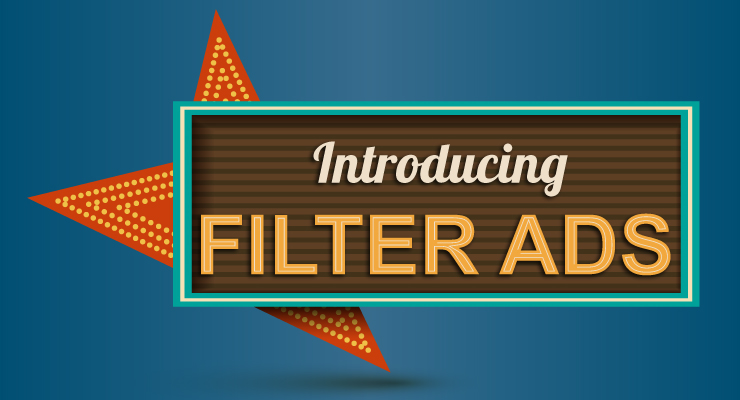How many people in the metro area where you live could conceivably be customers of your business? I live in a relatively small town in Ohio and it has over 40,000 people in it. So, seriously, how many people could be your customers? Hundreds? Thousands?
Now, what would you do if they all decided to patronize your business tomorrow? You’d turn summersaults for about 10 minutes and then promptly begin losing your ever-loving mind. You’re not set up to handle that many instant customers, nor are most other businesses. The good news is that you don’t need them all. You just need a portion of them – the right portion. You need to narrow down the list by qualifying these potential buyers with some kind of criteria.
There’s a ton of ways to accomplish this culling of the herd and a guru on every corner with a book or a web course to tell you how. Regardless of what system you use to define your target customer, there’s always that hesitation in your gut when it comes time to rule some people out. This is why I like to do it backwards.
Start With What You Don’t Want
Problem: Defining your target customer by benign demographics, positive personality traits, or persistent buying habits gets tricky, because it leaves a lot of people just outside the target. You know, those folks in the gray area where we wouldn’t go looking for them necessarily, but we wouldn’t turn them away either?
Solution: Don’t start with the target people. Instead focus on who you don’t want. Define your anti-customer.
Humans are complex when it comes to what we do want, but we tend to be pretty sure of what we don’t want. Begin your filtering process by listing the attributes of your anti-customer. This person can be a conglomerate of negative past experiences you would like to avoid in the future. He or she can be an example of someone whose lifestyle is directly incompatible with your product or service. Perhaps people outside a certain income bracket or in a certain location may have trouble affording you and you don’t want to constantly wrestle with your conscience of your pricing or availability. Whatever the reason, it is often easier to define the negative than the positive.
Introducing Filter Ads
Once you have successfully defined the anti-customer, you need an efficient way to filter them out of the marketplace and thus, out of your sales funnel. This is where Filter Ads come into play. Think about it, most people write what I call Attraction Ads. They are designed to attract the “right” people to a product or service. The problem with Attraction Ads is that they work against human nature much like a magnet works against gravity.
Filter Ads, on the other hand, work with human nature like a sieve or a strainer works with gravity. Filter Ads eliminate the immediate negative so that the Attraction Ads don’t have to work so hard. This is why any successful ad campaign utilizes both Attraction and Filter Ads.
Think about when you first launched your brand. Conventional wisdom says that you should have flooded the market with Attraction Ads to “raise awareness” and “get your name out there”. But what if you had run some Filter Ads up front to qualify the search before you ran your Attraction Ads to pick up what was left? Would it have been easier to find that target buyer? Sure it would have, because the pool was shallower and you were closer to knowing who your target customer was.
Believe it or not, many business owners base their advertising on who they want their target customers to be rather than letting the response to their ads reveal who their target customers actually are. Attraction Ads call out to the chaos of all people hoping to reach your target customers. They pull. Filter Ads clear out the chaos of all people and allow your target customers to emerge. They push. And anyone who has ever helped a buddy move knows that it;s easier to push than to pull.
There’s a Difference Between Evil and Effective
 Filter Ads aren’t evil, but they are effective. Ads that say hurtful or mean-spirited things about your anti-customer aren’t Filter Ads. Those are Attack Ads. Good Filter Ads won’t hurt your anti-customers, but they will bother them enough to keep them away. They may even cause them to change the channel or turn the page. That’s OK. Remember, you don’t wish ill upon anti-customers, you just don’t want to do business with them.
Filter Ads aren’t evil, but they are effective. Ads that say hurtful or mean-spirited things about your anti-customer aren’t Filter Ads. Those are Attack Ads. Good Filter Ads won’t hurt your anti-customers, but they will bother them enough to keep them away. They may even cause them to change the channel or turn the page. That’s OK. Remember, you don’t wish ill upon anti-customers, you just don’t want to do business with them.
There’s a man in my town who owns a massive grocery store where people can get produce, meat, and other products from all around the world. He also carries a selection of boxed, frozen, processed, and prepackaged food as well. However, his selection of fresh foods is far greater than that of his canned and packaged foods. This is because he caters to customers who shop for ingredients rather than those who shop for processed meals. His store is full of outrageous decor and unusual products, because his target customer is unique and imaginative. He wants people who are interested in the experience of great food and shopping for it.
His ads almost always center on his fresh ingredients and the shopper’s experience. Fast-shopping fishstick buyers usually think of his store as slow, crowded, and pricey (He further filters his anti-customers by charging more for fishsticks). As a result, fishstick buyers who are concerned with convenience and cheap prices don’t shop there, but the people who do wouldn’t shop anywhere else. He recognized long ago that he doesn’t need all the people – just a portion of them. And his unique combination of Filter and Attraction Ads help to clear the anti-customers and draw in the faithfuls. This is one example of how you can bother your anti-customers without angering them. There are many creative ways to do it. The point is that you need to mix Filter Ads with other types in a balance strategy.
Learn The Secrets of Writing Effective Filter Ads
There’s a lot more to Filter Ads than this article can cover. So, if you want to know more about the different kinds of ads and how to create a well-balanced campaign, contact Two Creative Design Group today. We’ll help you discover your own unique blend of advertising to find and attract your target customers for years to come.

